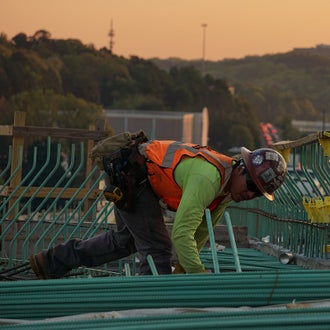I am keen to renovate my house but was told that it contains asbestos. My mate told me that I'd be fine to save money and remove it myself but I'm worried, what does it look like and what are the risks?"
If your house was built using asbestos-containing materials, the smallest renovation or odd job can increase your risk of serious asbestos-related diseases. Before you start, you need to know what asbestos is and how to deal with it safely.
Asbestos was completely banned from use in Australia in 2003. Up until the mid-1980s it was widely used in building materials including “fibro” sheeting, flue pipes, drains, wet area walls, roofing, ceiling and wall sheeting, fencing and gutters. It is thought about 1 out of 3 houses in Australia contain some form of asbestos-containing materials.
If you demolish, drill, cut, sand, scrub or waterblast those products, the asbestos fibres can be released into the air. Asbestos fibres are invisible. When released into the air they can be breathed in easily, trapped in your lungs and over time could cause mesothelioma (cancer of the cells that line our body cavities and cover most internal organs) and other cancers and diseases.
If you’re not sure if your home was built or renovated with asbestos-containing materials, get a professional to check and test it. If it has to be removed, use a licensed asbestos removalist. If you choose to do your own asbestos removal or maintenance, get advice to do it safely and minimise the risk to you and your family.
Do Cancer Council’s kNOw asbestos in your home online course (only one hour), and get a copy of the government's guide to asbestos for householders and the general public. There are rules about how much asbestos-containing materials a home owner/renovator can remove, make sure you know the rules for your state and local government council before you start.

